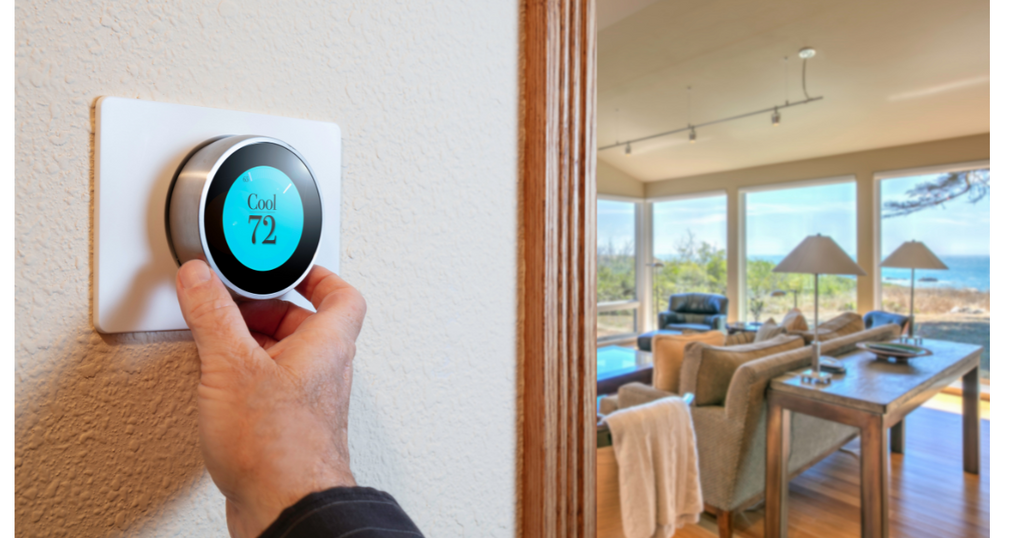Discover everything you need to know about Nest Thermostats in this comprehensive guide. From installation instructions to troubleshooting tips, programming details to energy-saving techniques, this guide covers it all.
Learn how to effectively use your Nest Thermostat to control your home's temperature, save energy, and even control it remotely from your smartphone. Find answers to common problems and get the most out of your Nest Thermostat with this informative guide.

Credit: ts2.space
Introduction To Nest Thermostats
What are Nest Thermostats? Nest Thermostats are smart, programmable thermostats designed to help you save energy and optimize comfort in your home. With their intuitive features and sleek design, Nest Thermostats have gained popularity among homeowners.
Benefits of Using Nest Thermostats:
- Energy savings: Nest Thermostats learn your preferred temperature settings and create a personalized schedule, helping you reduce energy consumption.
- Remote control: You can control your Nest Thermostat from anywhere using your smartphone or tablet.
- Compatibility: Nest Thermostats work with most HVAC systems, making them a versatile option for any home.
Overview of Nest Thermostat Models:
| Model | Features |
|---|---|
| Nest Learning Thermostat | AI-powered temperature learning, energy usage reports, compatible with smart home devices |
| Nest Thermostat E | Budget-friendly option, simplified design, energy-saving features |
Using Nest Thermostats
Setting up a Nest Thermostat is a straightforward process. Begin by downloading the Nest app on your smartphone and creating an account. Once the app is installed, follow the step-by-step instructions provided to guide you through the setup process. Make sure to connect the thermostat to your home Wi-Fi network for remote access and control.
After installation, it's time to program and schedule your Nest Thermostat. Customizing your temperature preferences is crucial for energy efficiency and cost savings. Utilize the app to set your desired temperature during various times of the day, taking into account your daily routine and occupancy patterns. The thermostat's learning capabilities will also adapt to your preferences over time.
To maximize energy savings, consider implementing the following tips:
- Teach your Nest Thermostat by manually adjusting the temperature according to your comfort level.
- Set your "Away" temperature thoughtfully, ensuring energy is not wasted during periods of absence.
- Avoid cranking the heat, as it won't warm your home faster.
- Use your fan sparingly to circulate air efficiently.
- Take advantage of natural heating and cooling methods, such as opening windows or adjusting vents.
- If you have multiple thermostats, set them up correctly to optimize comfort and energy usage.
- Regularly maintain your heating and cooling system to ensure optimal performance.
By following these guidelines and paying attention to the energy-saving features offered by your Nest Thermostat, you can achieve significant cost savings while maintaining a comfortable home environment.
Troubleshooting And Support
Common Nest Thermostat Problems:
- Faulty wiring
- Clogged air filter
- WiFi connection issues
Troubleshooting Tips:
- Check the wiring and ensure it is properly connected
- Clean or replace the air filter
- Restart the thermostat and try reconnecting to WiFi
- Ensure the thermostat is within range of the WiFi signal
- Update the firmware of the thermostat
- Reset the thermostat to factory settings if necessary
Contacting Nest Support:
If you are unable to resolve the issue on your own, contact Nest Support for further assistance. They have a team of experts who can help troubleshoot and provide solutions for any Nest Thermostat problems you may encounter.

Credit: mysmartcocoon.com

Credit: www.goodreads.com
Frequently Asked Questions On Nest Thermostats: A Comprehensive Guide
Why Is Google Discontinuing Nest?
Google is discontinuing Nest products due to challenges with updating them.
What Is A Common Problem With Nest Thermostats?
A common problem with Nest thermostats can range from faulty wiring to a clogged air filter. Sometimes, the thermostat may have trouble connecting to WiFi. Try troubleshooting yourself before contacting Nest support.
What Are The Drawbacks Of A Nest Thermostat?
The drawbacks of a Nest Thermostat include potential issues with faulty wiring, difficulty connecting to WiFi, and clogged air filters. It is important to troubleshoot these problems before contacting Nest support.
What Is The Most Efficient Way To Use A Nest Thermostat?
The most efficient way to use a Nest Thermostat is to teach it well, set your "Away" temperature thoughtfully, avoid cranking the heat, use the fan sparingly, and utilize windows for heating and cooling. It's also beneficial to use multiple thermostats, adjust radiators and vents, and maintain your heating and cooling system.
Conclusion
To sum up, this comprehensive guide provides valuable insights and information about Nest Thermostats. From installation to programming, troubleshooting to energy-saving tips, this guide covers it all. Whether you're a beginner or an experienced user, this guide will help you make the most of your Nest Thermostat.
By following these tips and guidelines, you can enhance your home's comfort and energy efficiency. Don't hesitate to refer back to this guide whenever you need assistance with your Nest Thermostat. Enjoy the convenience and savings that come with this smart home device!